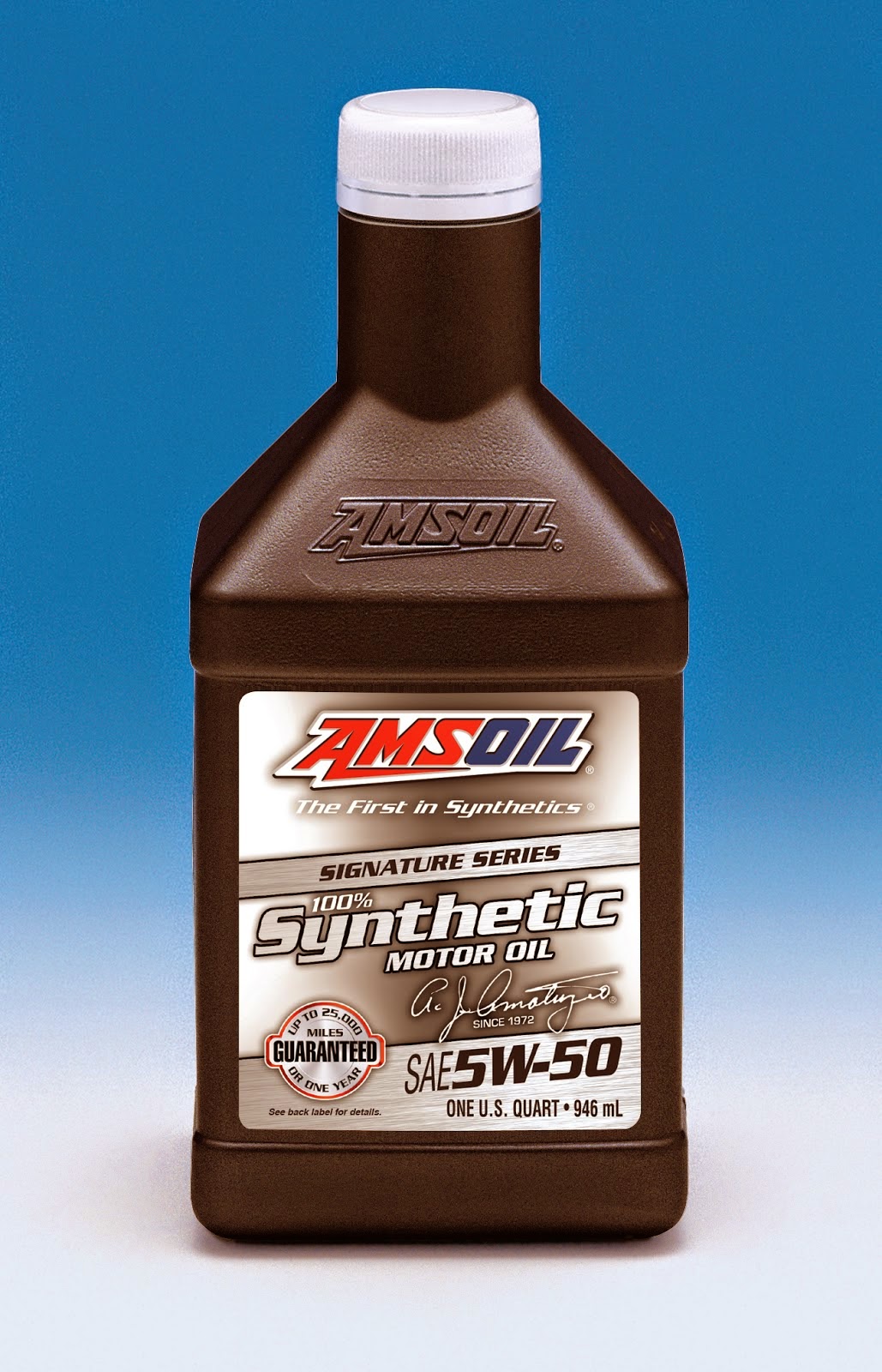 |
| AMSOIL Synthetic CVT Fluid |
CVTs require a unique transmission fluid with specialized frictional characteristics designed to ensure the belt or
chain remains in contact with the pulleys without slipping. AMSOIL Synthetic CVT Fluid provides outstanding
metal-to-metal frictional properties and excellent protection and performance for CVTs throughout vehicle
manufacturer-recommended drain intervals.
Package sizes include:
- Quart Bottle
- 2.5-Gallon Bottle
- 55-Gallon Drum
Continuously variable transmissions (CVTs) create unlimited gear ratios using a belt or chain running between two
variable diameter pulleys. CVTs require a unique transmission fluid with specialized frictional characteristics
designed to ensure the belt or chain remains in contact with the pulleys without slipping. AMSOIL Synthetic CVT Fluid
provides outstanding metal-to-metal frictional properties and excellent protection and performance for CVTs throughout
vehicle manufacturer-recommended drain intervals. It is Warranty Secure and will not void your vehicle's warranty.
AMSOIL Synthetic CVT Fluid is a cost-effective, high-performance alternative to original equipment manufacturer (OEM)
fluids.
Excellent Frictional Properties
The metal-to-metal frictional properties between the CVT's belt/chain interface and the pulleys are important,
relying on the CVT fluid to prevent slipping. AMSOIL Synthetic CVT Fluid provides exceptional metal-to-metal frictional
properties to help prevent belt and chain slipping and help extend transmission life.
Outstanding Wear Protection
AMSOIL Synthetic CVT Fluid is durable. In normal and severe service, it effectively resists wear to the
transmission's vital parts, helping achieve long life.
Resists Heat
In elevated heat, Synthetic CVT Fluid's thermally stable formulation guards against the harmful effects of thermal
breakdown. It resists the formation of varnish that can threaten transmission performance and life.
Superior Wet-Clutch Performance
AMSOIL Synthetic CVT Fluid provides superior wet-clutch performance for outstanding anti-shudder durability and
reduced noise, vibration and harshness.
Field Proven
Field testing was conducted to compare AMSOIL Synthetic CVT Fluid and Nissan NS-2 CVT Fluid. Four vehicles (two
equipped with AMSOIL CVT Fluid and two with Nissan NS-2 CVT Fluid) were driven 100,000 miles before the transmissions
were torn down and inspected.
Lab Tested
AMSOIL lab testing also reveals AMSOIL CVT Fluid met, and in some cases surpassed, the protection and performance
of Nissan NS-2 CVT Fluid:
- In FZG wear testing (ASTM D5182), Nissan NS-2 achieved a 7 stage pass, while AMSOIL CVT Fluid significantly
surpassed it with an 11 stage pass.
- In the JASO LVFA Anti-Shudder Durability Test, AMSOIL CVT Fluid lasted six times longer, translating into improved
anti-shudder durability and reduced noise, vibration and harshness.
APPLICATIONS
AMSOIL Synthetic CVT Fluid is recommended for belt- and chain-type continuously variable transmissions requiring
the following:
- Audi/Volkswagen TL 52180, G 052 180
- Dodge/Jeep CVTF+4®, NS-2
- Ford CVT23, CVT30, MERCON® C
- GM/Saturn DEX-CVT
- Honda HMMF, HCF-2
- Hyundai Genuine CVTF, SP-III
- Kia SP-III
- Mercedes-Benz 236.20
- Mini Cooper EZL 799
- Mitsubishi CVTF-J1, SP-III
- Nissan NS-2
- Subaru Lineartronic® CVTF (P/N K0425Y0710), NS-2
- Suzuki TC, CVT Green 1, NS-2
- Toyota TC
Not for use in eCVTs
For more information or to purchase AMSOIL Synthetic
CVT Fluid.
















